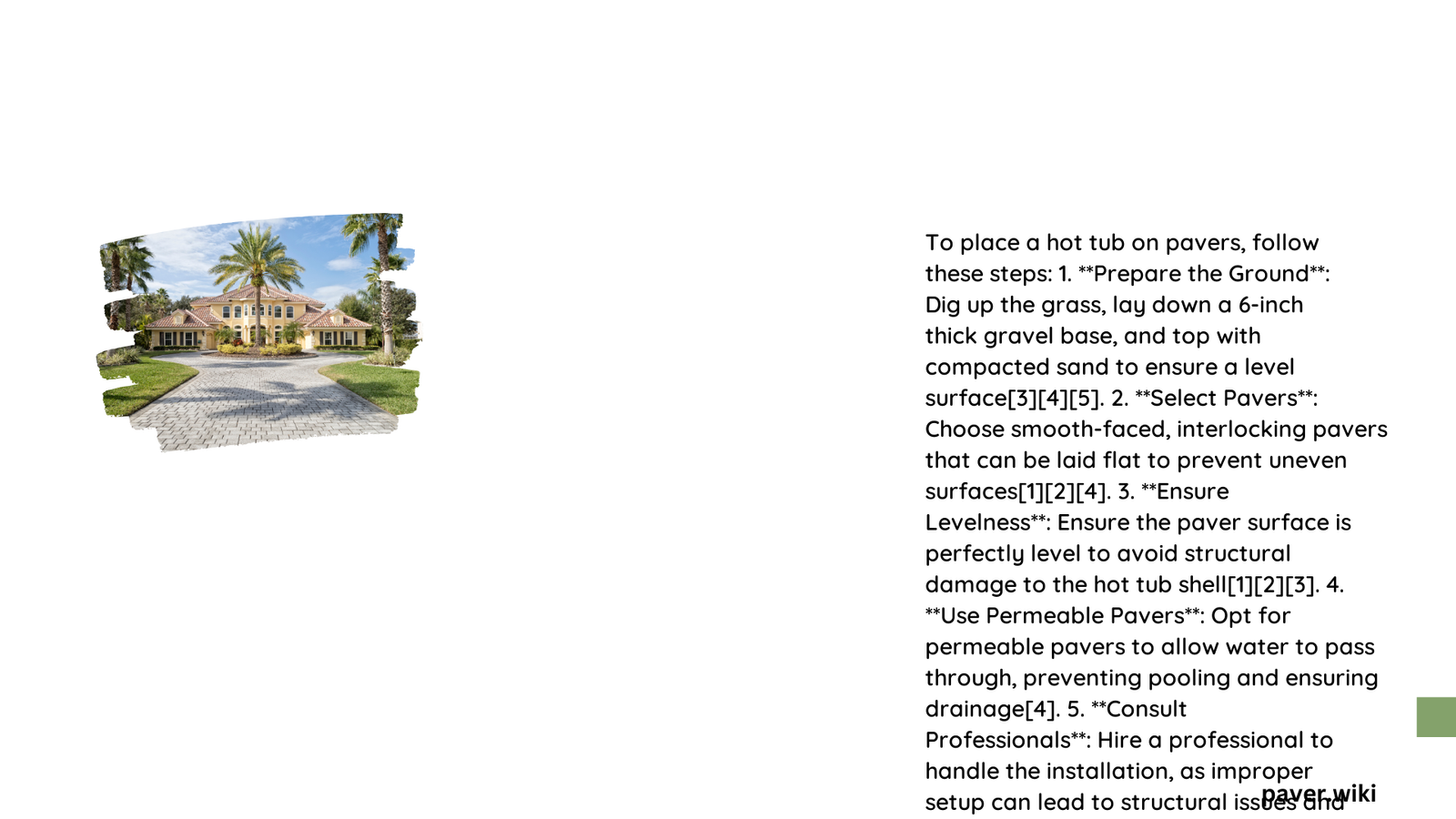Installing pavers under a hot tub requires careful planning and strategic material selection to ensure a stable, durable, and long-lasting foundation. Homeowners must consider weight distribution, drainage, thermal properties, and moisture resistance to create an optimal base that supports the significant weight of a hot tub while providing aesthetic appeal and functional performance.
What Are the Best Paver Materials for Hot Tub Foundations?
Selecting the right paver material is crucial for creating a robust foundation that can withstand the substantial weight and environmental challenges of a hot tub installation. Let’s explore the top paver options:
Concrete Pavers: Durability Meets Performance
| Material Characteristic | Concrete Paver Performance |
|---|---|
| Weight Capacity | 3,000-6,000 pounds support |
| Thermal Stability | Excellent temperature resistance |
| Moisture Protection | High chemical and water resistance |
Key Advantages:
– Uniform weight distribution
– Cost-effective solution
– Multiple design options
– Long-lasting performance
Ceramic Pavers: Aesthetic Elegance with Functional Strength
Ceramic pavers offer a sophisticated alternative to traditional concrete, providing unique aesthetic qualities while maintaining structural integrity. However, they require more careful selection and potentially additional support mechanisms.
Interlocking Pavers: Advanced Weight Management
Interlocking pavers represent a cutting-edge solution for hot tub foundations, featuring:
– Engineered weight distribution
– Enhanced drainage capabilities
– Flexible installation options
– Minimal maintenance requirements
How to Prepare the Perfect Paver Foundation?

Base Preparation Techniques
- Excavation Requirements
- Dig area slightly larger than hot tub base
- Recommended depth: 6 inches
-
Remove organic materials and debris
-
Drainage Layer Installation
- Add landscape cloth to prevent weed growth
- Install 4-inch gravel or sand base
- Compact each layer thoroughly
- Create 1-2% slope for water runoff
Compaction and Leveling Strategies
- Use plate compactor for uniform surface
- Check levelness with professional-grade laser level
- Ensure maximum ground stability
- Remove any potential high or low points
What Maintenance Practices Extend Paver Lifespan?
Cleaning and Preservation Protocols
Recommended Maintenance Schedule:
– Quarterly cleaning
– Biennial sealing
– Annual comprehensive inspection
Cleaning Recommendations:
– Use mild detergent
– Avoid harsh chemical cleaners
– Utilize soft-bristled brushes
– Rinse thoroughly after cleaning
Potential Challenge Mitigation
| Challenge | Solution |
|---|---|
| Efflorescence | White vinegar solution |
| Paver shifting | Regular compaction checks |
| Surface staining | Professional-grade sealer |
Pro Tips for Long-Term Hot Tub Paver Performance
- Always consult manufacturer specifications
- Consider professional installation for complex layouts
- Invest in high-quality drainage solutions
- Monitor foundation stability periodically
- Choose pavers rated for outdoor environmental conditions
Critical Considerations:
– Weight distribution
– Moisture management
– Temperature fluctuation resistance
– Aesthetic integration with landscape design
Final Recommendations
Successful pavers under a hot tub installation demands meticulous planning, quality materials, and ongoing maintenance. By following these comprehensive guidelines, homeowners can create a stable, attractive, and durable foundation that enhances both the functionality and visual appeal of their outdoor living space.
Expert Insight
Professional landscapers recommend investing in premium materials and professional installation to maximize long-term performance and minimize potential structural issues.
References:
– Sundance Spas Foundation Guide
– Backyard Bases Hot Tub Foundation
– Hydropool Hot Tub Paver Installation
